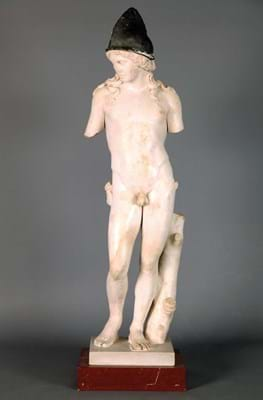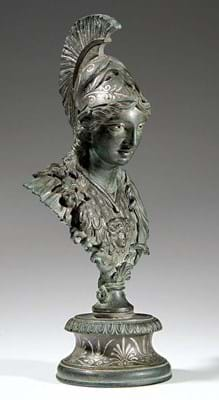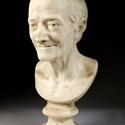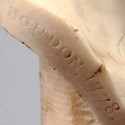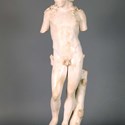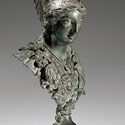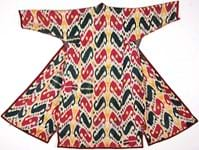Highlights and previews
£1 = €1.16
EARLY new year sales in France have included a selection of significant results for sculpture, be it from the ancient world, the 17th or the 18th century.
An old primary provenance is always a bonus in bringing anything to market. As well as the appeal of a lengthy background history, it provides the added reassurance of documented ownership.
The two star turns in the sale held at Drouot on January 31 by Muizon- Rieunier (23.92% buyer’s premium) had a provenance going back to a distinguished 18th century French family. Both had come from Charles Marie Nicholas Aimée Ethis de Corny (1763-1829) and passed down by direct descent.
Corny was a soldier who served with Comte de Rochambeau’s troops in the American War of Independence. He also accompanied Lafayette and was instrumental in forging relations with Thomas Jefferson, whom he met often during the latter’s ambassdorship to Paris. Leaving behind his military career, Corny went on to pursue writing and philosophy. A man of The Enlightenment, he also acquired the position of public prosecutor for the king to cover Paris, later becoming a fervent partisan of the Revolution. One of Corny’s possessions was a fine version of the famous marble bust of Voltaire, a model executed from life in 1788 by Jean Antoine Houdon (1741-1828).
The sculptor only had two or three sittings with the great writer and philosopher in the final year of his life, during what was Voltaire’s first visit to Paris for over 25 years.
Around a dozen of these marble busts are known to exist, many of them in public institutions such as the Louvre, The Met and the National Gallery of Art in Washington.
This example, which the auctioneers thought may have been commissioned by Corny himself, bears Houdon’s studio stamp in red wax as well as the signature and the date 1788. It was secured at the sale by the Château de Voltaire at Ferney- Voltaire which stepped in to exercise its right of pre-emption to claim the piece for the nation as the hammer fell at a price of €125,000 (£107,760).
The bust will have pride of place in the château which reopens this spring after a long period of restoration.
The Corny property included a 16in (40.5cm) bronze group after the antique of The Wrestlers. This was stamped twice with the C couronné mark, once on the foot of one of the combatants and again on the base, dating it to the period 1745-49.
This ended up selling at €105,000 (£90,520).
A Roman bronze bust of Athena proved to be the highlight of the Pierre Bergé & Associés’ (24/20.5/17% buyer’s premium) February 2 auction of Antiquities.
The finely sculpted 11in (27.5cm) high portrait of the goddess dates to the 1st to 2nd century. She is depicted with long tresses and silver-encrusted eyes, wearing a Corinthian-type helmet and a cuirass decorated with a gorgon’s head, surrounded by serpents. The bust had a provenance back to the 1960s when it belonged to a Munich collector and was then acquired by a second Munich collector around 2002. Estimated at €60,000-80,000, it ended up going for €160,000 (£137,930) to an online bidder at the Drouot sale.
The Louvre also exercised its right of pre-emption at this auction to secure six lots of papyri and limestone ostracons (inscribed sherds) from a small collection in the ancient Eygptian section that had come from the collection of Jean Clere (1906-89) and were offered to the vendor by Irene Clere.
The most expensive at €36,000 (£31,035) was a sherd from Deir sel- Médineh dated to the XIX dynasty, inscribed in heiroglyphics with a passage from the tale of Sinuhe and an invocation to a deity.




